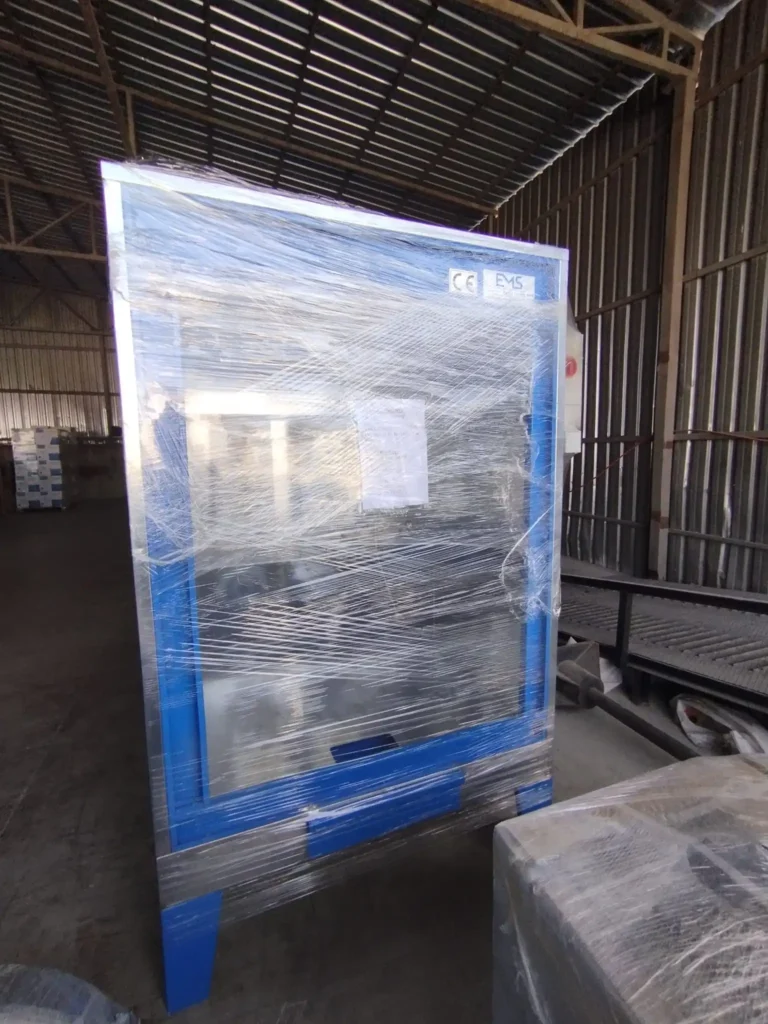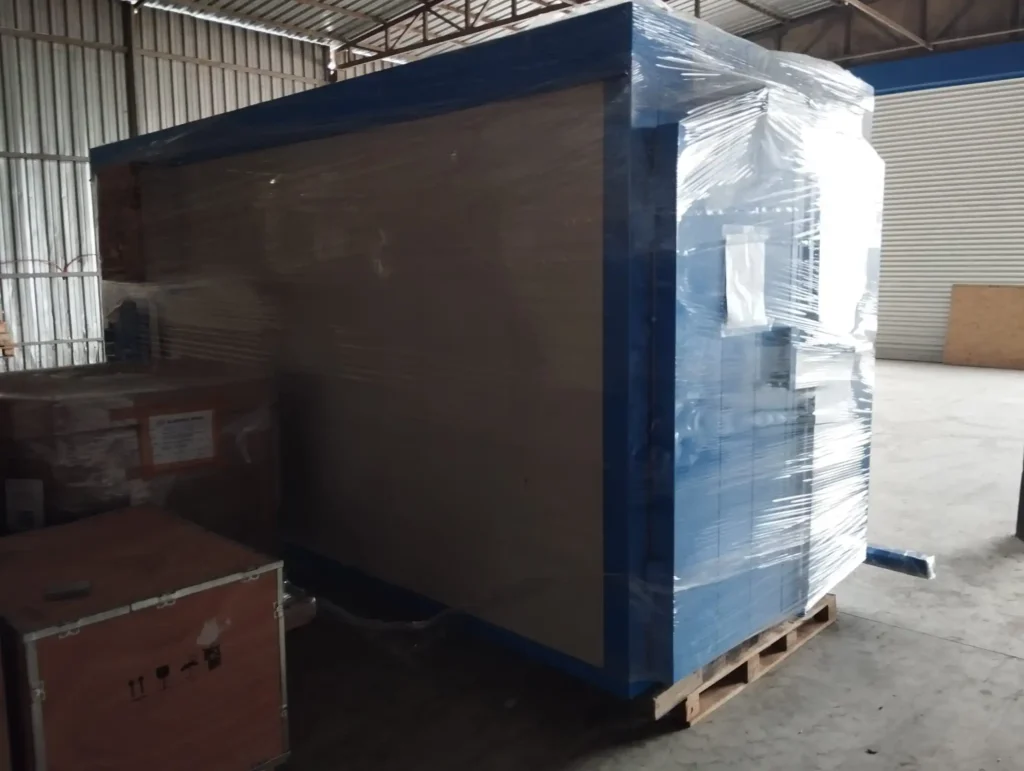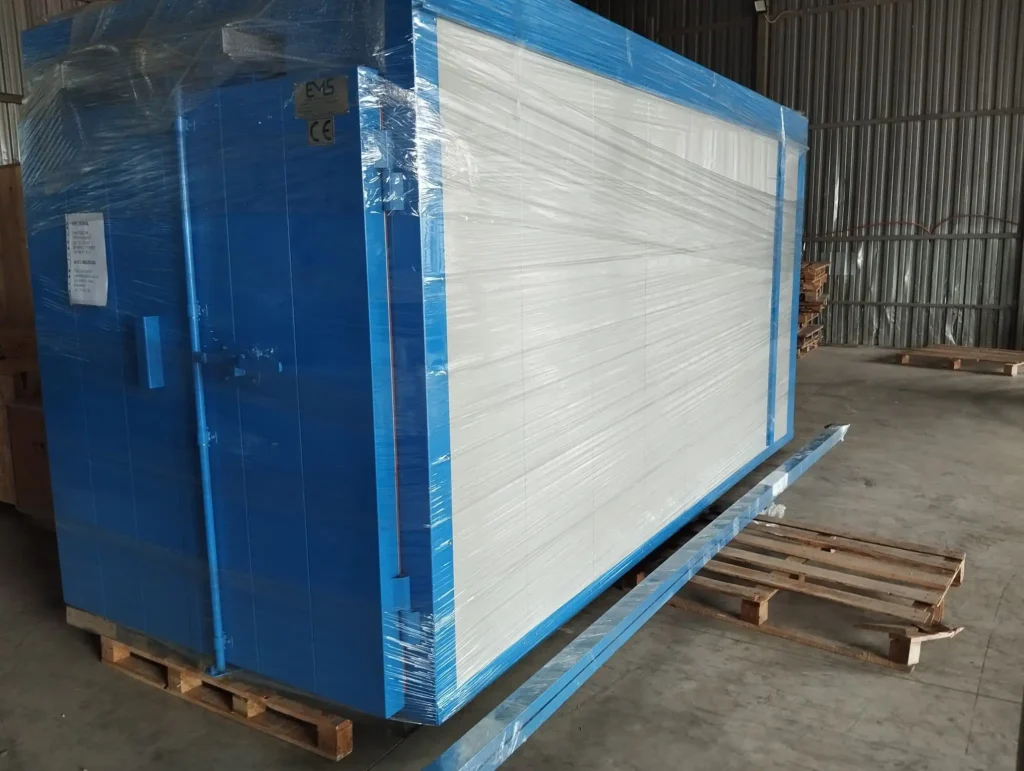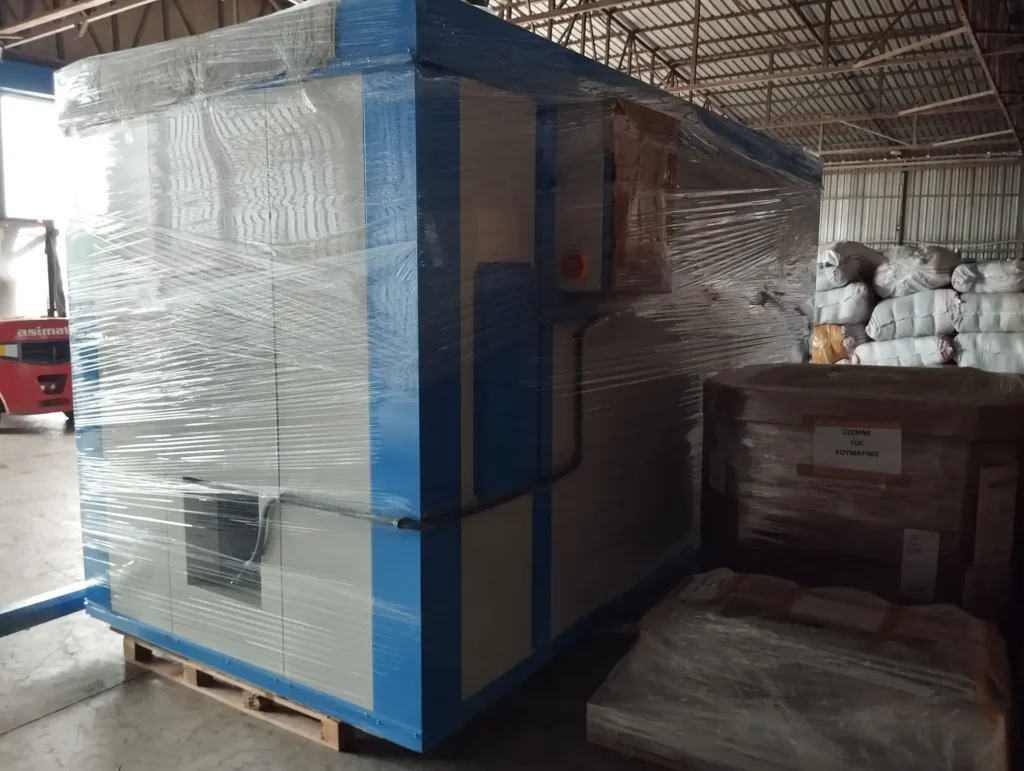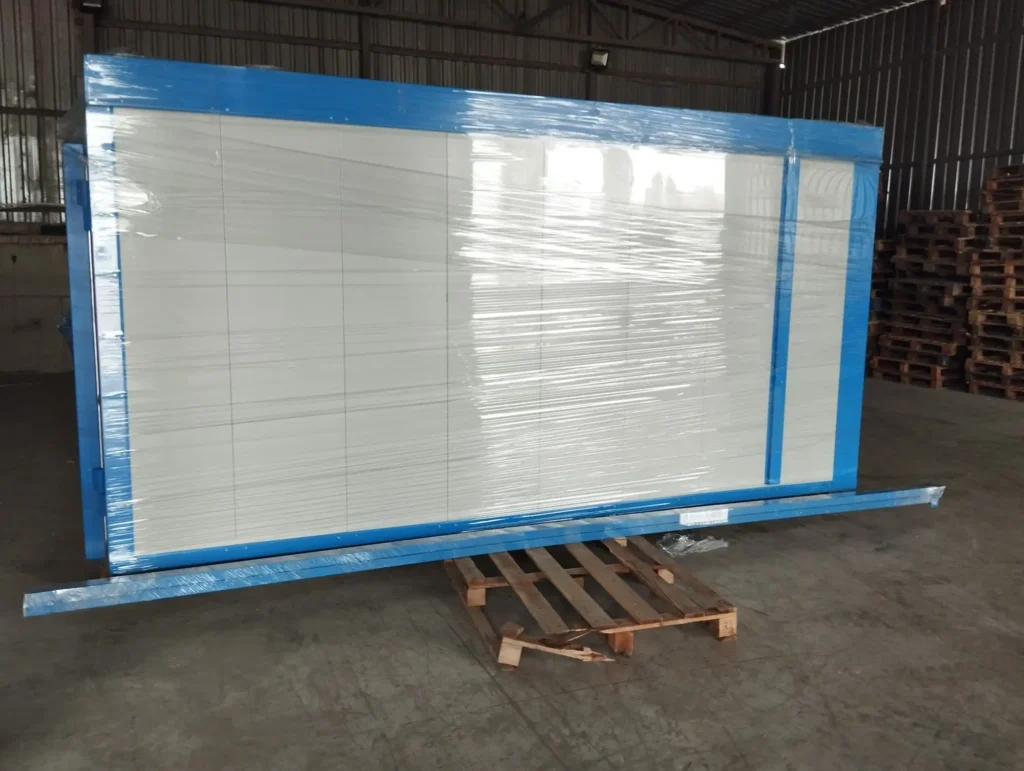
Cleaning powder coating hooks is an essential part of maintaining the efficiency and quality of the powder coating process. Here’s a step-by-step guide on how to clean powder coating hooks:
Materials Needed:
- Safety Gear: Wear appropriate personal protective equipment, including gloves and safety glasses, to protect yourself from any chemicals or debris.
- Brushes: Use soft-bristle brushes to remove powder coating residues.
- Solvent or Cleaner: Choose a suitable solvent or cleaner based on the type of powder coating material used. Common options include isopropyl alcohol or a mild solvent recommended by the coating manufacturer.
- Cloths or Rags: Have lint-free cloths or rags for wiping and drying.
- Ventilation: Ensure proper ventilation in the cleaning area to avoid inhaling fumes.
Cleaning Process:
- Safety First:
- Put on the appropriate safety gear to protect yourself from any chemicals or particles.
- Remove Excess Powder:
- Before cleaning, remove any excess powder coating from the hooks by tapping or brushing them.
- Brushing:
- Use soft-bristle brushes to gently scrub off the remaining powder coating. Be thorough but gentle to avoid damaging the hooks.
- Solvent Application:
- Apply a small amount of the chosen solvent or cleaner to a cloth or brush.
- Gently rub the hooks with the solvent-soaked cloth or brush to dissolve and remove any stubborn residues.
- Wipe Down:
- Use clean, dry cloths or rags to wipe down the hooks and remove any remaining solvent or loose particles.
- Inspect:
- Inspect the hooks to ensure that all powder coating residues have been removed. Check for any signs of damage or wear.
- Repeat if Necessary:
- If some areas are still coated or if the hooks are not completely clean, repeat the cleaning process until satisfactory results are achieved.
- Dry Thoroughly:
- Ensure that the hooks are completely dry before returning them to use. Proper drying prevents the accumulation of moisture, which can lead to issues like rust.
- Storage:
- Store the cleaned hooks in a dry and well-ventilated area to prevent any future corrosion or contamination.
Remember to follow the guidelines provided by the powder coating material manufacturer for specific cleaning recommendations. Regular maintenance and cleaning will help extend the life of your powder coating hooks and contribute to the overall quality of the powder coating process.
Powder Coating Hook Cleaning
Cleaning powder coating hooks often involves removing residual powder coating, and in some cases, using heat can be an effective method. Here’s a guide on using an oven for powder coating hook cleaning:
Materials Needed:
- Oven: A dedicated oven for cleaning hooks. This can be a conventional oven or an infrared oven designed for powder coating equipment cleaning.
- Safety Gear: Wear appropriate personal protective equipment, including heat-resistant gloves and safety glasses.
- Brushes: Soft-bristle brushes for removing loose powder coating residues.
- Solvent or Cleaner: If necessary, a mild solvent for stubborn residues.
- Ventilation: Ensure proper ventilation in the cleaning area to handle any fumes.
Cleaning Process:
- Safety First:
- Put on heat-resistant gloves and safety glasses to protect yourself from the high temperatures.
- Preheat the Oven:
- Preheat the oven to a temperature suitable for removing powder coating residues. This temperature will depend on the specific powder coating material used. Typically, temperatures around 350-450°F (175-230°C) are effective.
- Remove Excess Powder:
- Before placing the hooks in the oven, remove any loose or excess powder coating by tapping or brushing them.
- Place Hooks in the Oven:
- Arrange the hooks in the oven, ensuring they are spaced adequately to allow even heating.
- Heating Process:
- Allow the hooks to heat in the oven for a specified period, usually around 10-20 minutes, depending on the temperature and the thickness of the powder coating.
- Check and Brush:
- Periodically check the hooks to see if the powder coating has softened or started to flake off. Use soft brushes to remove any loosened residues.
- Repeat if Necessary:
- If some areas still have powder coating residues, repeat the heating process until the hooks are thoroughly cleaned.
- Cool Down:
- Allow the hooks to cool down before handling them. Use caution as they may be hot.
- Final Inspection:
- Inspect the hooks to ensure that all powder coating residues have been effectively removed. Check for any signs of damage or wear.
- Additional Cleaning if Required:
- If there are stubborn residues, use a mild solvent or cleaner in combination with brushing to address specific areas.
Always follow the guidelines provided by the powder coating material manufacturer for specific cleaning recommendations, including recommended temperatures and durations for the cleaning process. Using heat for cleaning hooks can be an efficient method, but it requires careful attention to prevent overheating and potential damage to the hooks.
Powder Coating Oven
A powder coating oven is a crucial component in the powder coating process, designed to cure and solidify the applied powder coating on various objects, including hooks used in the powder coating industry. These ovens are specially engineered to provide controlled and uniform heating to ensure the powder coating adheres securely and forms a durable finish.
Technical Details:
Powder coating ovens typically operate at elevated temperatures ranging from 300°F to 450°F (150°C to 230°C). They consist of well-insulated chambers with precise temperature control mechanisms, ensuring even distribution of heat. The ovens may use electric, gas, or infrared heating systems, each offering specific advantages based on energy efficiency and curing requirements.
The curing process involves several stages, including a preheat phase to bring the object and coating to a uniform temperature, followed by a dwell period where the temperature is maintained for optimal curing. The post-curing phase allows for gradual cooling, preventing thermal shock and ensuring the coating’s durability.
Oven designs may vary, accommodating different sizes and shapes of objects, including specialized hooks used in powder coating applications. Some ovens feature conveyor systems for continuous processing, while others are batch ovens suitable for smaller quantities.
Safety measures are paramount in powder coating ovens, with features such as ventilation systems to extract fumes, safety interlocks, and temperature monitoring devices to prevent overheating. The efficiency of a powder coating oven significantly influences the quality and longevity of the finished product, making it a critical element in the powder coating workflow.
Hook Cleaning Oven
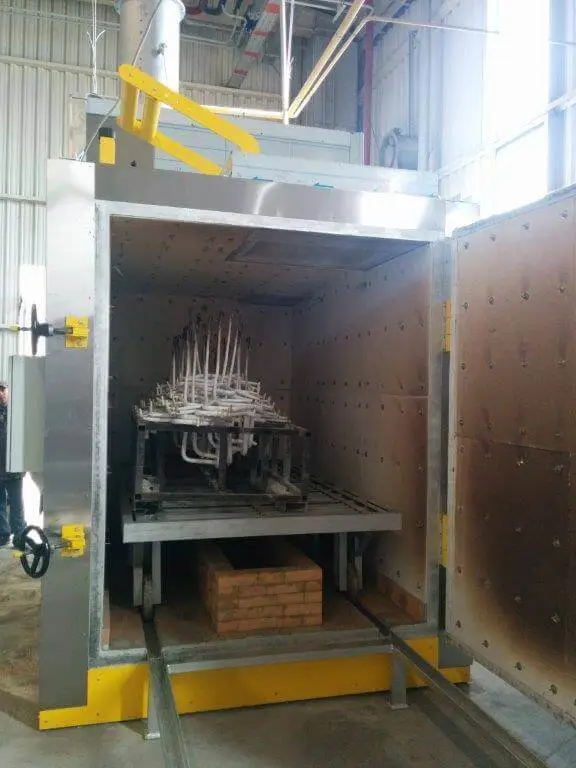
A hook cleaning oven is a specialized piece of equipment designed for the meticulous cleaning of hooks used in powder coating applications. As an integral part of powder coating maintenance, these ovens utilize controlled heat to facilitate the removal of residual powder coatings from hooks, ensuring optimal performance and longevity.
Technical Details:
Hook cleaning ovens are engineered with a focus on temperature precision and even distribution to effectively soften and eliminate powder coating residues adhering to hooks. Operating within a temperature range of 350°F to 450°F (175°C to 230°C), these ovens offer a controlled environment for the cleaning process.
The ovens may feature adjustable racks or hooks to accommodate various sizes and quantities. The design often incorporates insulation materials to retain heat efficiently, promoting energy conservation and minimizing operational costs. Safety measures, such as heat-resistant materials and ventilation systems, are integrated to create a secure working environment.
The cleaning process involves placing hooks inside the oven, allowing the residual powder coating to soften and become more manageable for removal. Soft-bristle brushes can be used to gently scrub off the loosened residues. The duration of the cleaning cycle depends on factors like temperature settings and the thickness of the coating.
Efficient hook cleaning is essential for maintaining the quality of powder coating processes, preventing contamination, and extending the lifespan of hooks. These dedicated ovens play a crucial role in the overall efficiency of powder coating operations by ensuring that hooks are consistently cleaned and ready for reuse in subsequent coating applications.
Infrared Cleaning Oven:
An infrared cleaning oven represents an advanced and efficient technology employed in the cleaning and maintenance of hooks used in powder coating processes. By harnessing infrared radiation, these ovens provide targeted and rapid heating, facilitating the removal of powder coating residues from hooks with precision.
Technical Details:
Infrared cleaning ovens utilize infrared radiation to transfer heat directly to the surface of hooks, offering a quick and controlled cleaning process. Operating in the temperature range of 350°F to 500°F (175°C to 260°C), these ovens can achieve rapid heating, allowing for shorter cleaning cycles compared to traditional methods.
The infrared cleaning process involves placing hooks in the oven, where they are exposed to focused infrared radiation. This targeted heat softens and loosens powder coating residues, making them easier to remove. The ovens are equipped with precise temperature controls, ensuring uniform heating and preventing overheating.
One notable advantage of infrared cleaning is its energy efficiency, as it minimizes heat loss to the surrounding environment. Additionally, the rapid heating and cooling cycles contribute to overall time savings in the cleaning process. Safety features such as temperature monitoring, ventilation systems, and heat-resistant materials are incorporated to ensure a secure working environment.
Infrared cleaning ovens are particularly suitable for high-volume production environments where efficiency and quick turnaround are paramount. By harnessing the power of infrared radiation, these ovens provide a modern and effective solution for maintaining the cleanliness and functionality of hooks in powder coating applications.
Powder Coating Equipment Cleaning:
Powder coating equipment cleaning is a critical aspect of maintaining the functionality and efficiency of the entire powder coating system, ensuring consistent and high-quality coating applications. This process involves thorough cleaning of various components, including hooks, to remove residual powder coatings and prevent contamination.
Technical Details:
The cleaning of powder coating equipment encompasses a range of components, with hooks being a vital element. The process typically involves the use of dedicated cleaning solutions or solvents, along with specialized equipment such as cleaning ovens or booths. The choice of cleaning method depends on factors like the type of powder coating material, equipment design, and the extent of contamination.
Solvents or cleaners are applied to hooks to break down and dissolve powder coating residues. Soft-bristle brushes may be used to facilitate the removal of loosened particles. The cleaning process can be manual or automated, depending on the scale of production and the complexity of the equipment.
For hooks specifically, cleaning ovens are often employed to provide controlled heat for softening and removing stubborn powder coating residues. These ovens may utilize conventional heating methods or advanced technologies such as infrared radiation to expedite the cleaning process.
Regular equipment cleaning is essential to prevent cross-contamination, maintain coating quality, and extend the lifespan of components. It contributes to the overall efficiency of the powder coating system, ensuring that each coating application is consistent and meets quality standards.
Adherence to manufacturer guidelines for cleaning procedures, along with proper training for personnel involved, is crucial to achieving effective and safe powder coating equipment cleaning. This comprehensive approach helps optimize the performance and longevity of the entire powder coating setup.
Heat Cleaning for Hooks:
Heat cleaning for hooks is a specialized process employed in the powder coating industry to remove residual coatings and contaminants from hooks used in the coating process. This method utilizes controlled heat to soften and facilitate the removal of powder coatings, ensuring the hooks remain in optimal condition for repeated use.
Technical Details:
Heat cleaning for hooks typically involves the use of ovens or heating chambers designed specifically for this purpose. The temperature range for this process generally falls between 350°F to 450°F (175°C to 230°C), providing sufficient heat to break down and loosen powder coating residues without causing damage to the hooks.
Hooks are placed in the oven, where they are exposed to the controlled heat for a specific duration. The heat softens the powder coating, making it easier to remove. The process may include intermittent checks and brushing to ensure thorough cleaning.
The efficiency of heat cleaning relies on the precise control of temperature and exposure time. The goal is to achieve effective cleaning while minimizing the risk of overheating, which could potentially damage the hooks. Safety measures, including temperature monitoring and proper ventilation, are essential to create a secure working environment.
This method is particularly suitable for hooks with complex shapes or intricate designs where manual cleaning may be challenging. It offers a uniform and controlled approach to removing coatings, contributing to the overall efficiency and quality of powder coating processes.
Heat cleaning for hooks is an integral part of equipment maintenance in powder coating operations, helping to extend the life of hooks, prevent cross-contamination, and ensure the consistent application of powder coatings on various substrates.
Dedicated Cleaning Oven:
A dedicated cleaning oven is a specialized piece of equipment designed exclusively for the thorough cleaning of tools and components used in powder coating processes, including hooks. This type of oven provides a controlled environment to efficiently remove powder coating residues, ensuring that tools are ready for optimal performance in subsequent coating applications.
Technical Details:
Dedicated cleaning ovens are engineered with precision temperature control, insulation, and safety features to create an ideal environment for the cleaning process. Operating within the temperature range of 350°F to 450°F (175°C to 230°C), these ovens offer a controlled heat application to soften and facilitate the removal of powder coating residues from hooks.
The design of dedicated cleaning ovens may include adjustable racks, hooks, or trays to accommodate various sizes and quantities of tools. The insulation materials used in these ovens contribute to energy efficiency by retaining heat, reducing operational costs, and ensuring uniform heating during the cleaning cycle.
Safety measures such as ventilation systems, temperature monitoring devices, and heat-resistant materials are integrated to create a secure working environment for operators. The ovens may also feature programmable controls to customize cleaning cycles based on specific needs, ensuring flexibility and efficiency in the cleaning process.
The dedicated cleaning oven plays a crucial role in the maintenance of powder coating tools, preventing cross-contamination and ensuring the longevity of the equipment. Its focused functionality makes it an indispensable asset in powder coating facilities, contributing to the overall quality and consistency of the coating process. Regular use of dedicated cleaning ovens is a key practice for businesses aiming to uphold high standards in their powder coating operations.
Residue Removal Oven:
A residue removal oven is a specialized equipment designed to address the meticulous task of eliminating powder coating residues from various tools, with a particular emphasis on hooks used in powder coating processes. This oven employs controlled heat to soften and facilitate the removal of stubborn residues, ensuring the tools remain in optimal condition for subsequent coating applications.
Technical Details:
Residue removal ovens are engineered with precision temperature control mechanisms to provide a controlled and uniform heat application during the cleaning process. Operating within a temperature range of 350°F to 450°F (175°C to 230°C), these ovens are designed to soften and loosen powder coating residues adhering to hooks without causing damage to the tools.
The interior design of residue removal ovens often features adjustable racks, trays, or hooks to accommodate various tool sizes and configurations. The insulation materials used in the oven contribute to energy efficiency, ensuring that heat is retained for effective residue removal while minimizing operational costs.
Safety features such as ventilation systems, temperature monitoring devices, and heat-resistant materials are integrated into the design to create a secure working environment. The ovens may also incorporate programmable controls to allow operators to customize cleaning cycles based on specific needs, providing flexibility and efficiency in the residue removal process.
Regular use of residue removal ovens is crucial for maintaining the quality and performance of tools in powder coating operations. By effectively eliminating residues, these ovens contribute to the prevention of cross-contamination, ensuring that each coating application is consistent and meets the required standards. Residue removal ovens are integral components in the overall equipment maintenance strategy, enhancing the efficiency and reliability of powder coating processes.
High-Temperature Cleaning:
High-temperature cleaning refers to a specialized process used in the powder coating industry to remove stubborn residues and contaminants from tools, particularly hooks, through the application of elevated temperatures. This method harnesses controlled heat to soften and facilitate the removal of powder coating residues, ensuring tools are thoroughly cleaned and ready for subsequent coating applications.
Technical Details:
High-temperature cleaning is typically performed using ovens or heating chambers designed to withstand and regulate elevated temperatures. The process operates within a temperature range of 350°F to 500°F (175°C to 260°C), providing the necessary heat to break down and loosen persistent powder coating residues without compromising the integrity of the tools.
Hooks are placed in the oven, where they are exposed to controlled high temperatures for a specific duration. The heat softens the powder coating, making it easier to remove. The process may involve intermittent checks and brushing to ensure thorough cleaning.
The efficiency of high-temperature cleaning lies in the precise control of temperature and exposure time. Safety measures, including temperature monitoring, proper ventilation, and the use of heat-resistant materials, are essential to create a secure working environment for operators and to prevent any potential damage to the tools.
This method is particularly effective for hooks with complex shapes or intricate designs where manual cleaning may be challenging. High-temperature cleaning contributes to the overall efficiency and quality of powder coating processes by ensuring tools are consistently cleaned and ready for reuse in subsequent applications.
Regular high-temperature cleaning is an essential aspect of equipment maintenance in powder coating operations, playing a pivotal role in extending the lifespan of tools, preventing cross-contamination, and maintaining the reliability of the coating process.
Powder Coating Tool Maintenance:
Powder coating tool maintenance involves a comprehensive approach to ensure the longevity, functionality, and efficiency of tools used in powder coating processes, with a particular focus on hooks. The process includes regular cleaning, inspection, and preventive measures to address wear and tear, ultimately contributing to the overall quality of powder coating applications.
Technical Details:
- Cleaning Procedures:
- Utilize dedicated cleaning ovens or methods such as high-temperature cleaning to remove powder coating residues from hooks.
- Employ suitable solvents or cleaners to dissolve and eliminate stubborn residues.
- Implement soft-bristle brushes for manual cleaning, ensuring all surfaces of the hooks are thoroughly addressed.
- Inspection and Evaluation:
- Regularly inspect hooks for signs of wear, damage, or deformation that may impact their performance.
- Evaluate the integrity of the coating on the hooks to ensure it adheres properly and is free from defects.
- Preventive Measures:
- Implement preventive measures such as applying coatings with enhanced durability or corrosion resistance to extend the lifespan of hooks.
- Consider the use of protective coatings or treatments to minimize wear and facilitate easier cleaning.
- Temperature Control:
- Adhere to recommended temperature ranges during the powder coating and cleaning processes to prevent overheating or thermal damage to the tools.
- Ensure that cleaning ovens or methods maintain precise temperature control for effective residue removal.
- Documentation:
- Maintain detailed records of cleaning schedules, inspections, and any maintenance activities performed on each set of hooks.
- Document any abnormalities or issues observed during inspections for further analysis and improvement.
- Training and Education:
- Provide training for personnel involved in powder coating tool maintenance, emphasizing proper cleaning techniques, safety protocols, and equipment usage.
- Educate operators on recognizing signs of wear or damage and the importance of reporting issues promptly.
- Quality Control Measures:
- Implement stringent quality control measures to ensure that hooks meet specified standards after each cleaning and maintenance cycle.
- Conduct periodic audits of the powder coating tool maintenance process to identify areas for improvement.
Powder coating tool maintenance is a continuous process that requires attention to detail and a proactive approach. By incorporating these technical details into the maintenance routine, businesses can ensure the reliability and longevity of their powder coating tools, particularly hooks, contributing to consistent and high-quality coating applications.
Heat-Assisted Hook Cleaning:
Heat-assisted hook cleaning is a specialized method used in the powder coating industry to effectively remove powder coating residues from hooks. This technique leverages controlled heat to soften the coating, making it more manageable for thorough cleaning. The process is designed to maintain the integrity of the hooks while ensuring they are free from contaminants for optimal performance in subsequent powder coating applications.
Technical Details:
- Temperature Control:
- Heat-assisted cleaning involves the use of ovens or dedicated heating chambers with precise temperature controls. The temperature typically ranges from 350°F to 450°F (175°C to 230°C).
- The controlled heat softens the powder coating residues on the hooks, allowing for easier removal without causing damage to the tool.
- Duration of Heating:
- Hooks are placed in the oven, and the heating duration is carefully monitored. The time may vary based on factors such as the thickness of the coating and the specific characteristics of the powder material.
- The goal is to achieve a sufficient softening of the coating, making it susceptible to removal without prolonged exposure to high temperatures.
- Safety Measures:
- Safety is paramount in heat-assisted cleaning. The ovens are equipped with features such as temperature monitoring devices, ventilation systems, and heat-resistant materials to ensure a secure working environment.
- Personnel handling the process are trained to follow safety protocols and use appropriate personal protective equipment.
- Brushing and Inspection:
- After the heating cycle, hooks are inspected to ensure that the powder coating has softened adequately.
- Soft-bristle brushes or other suitable tools are used to gently scrub off the loosened residues, completing the cleaning process.
- Preventing Thermal Damage:
- Care is taken to prevent thermal damage to the hooks. The temperature and duration are controlled to avoid overheating, which could potentially compromise the structural integrity of the hooks.
- Quality Assurance:
- Heat-assisted cleaning contributes to quality assurance by ensuring that hooks are thoroughly cleaned, preventing cross-contamination, and maintaining a consistent and high-quality powder coating process.
Heat-assisted hook cleaning is an efficient and controlled method that aligns with the stringent requirements of the powder coating industry. By employing this technical approach, businesses can enhance the cleanliness and usability of hooks, contributing to the overall success and efficiency of their powder coating operations.
Powder Coating Machinery At Competitive Prices
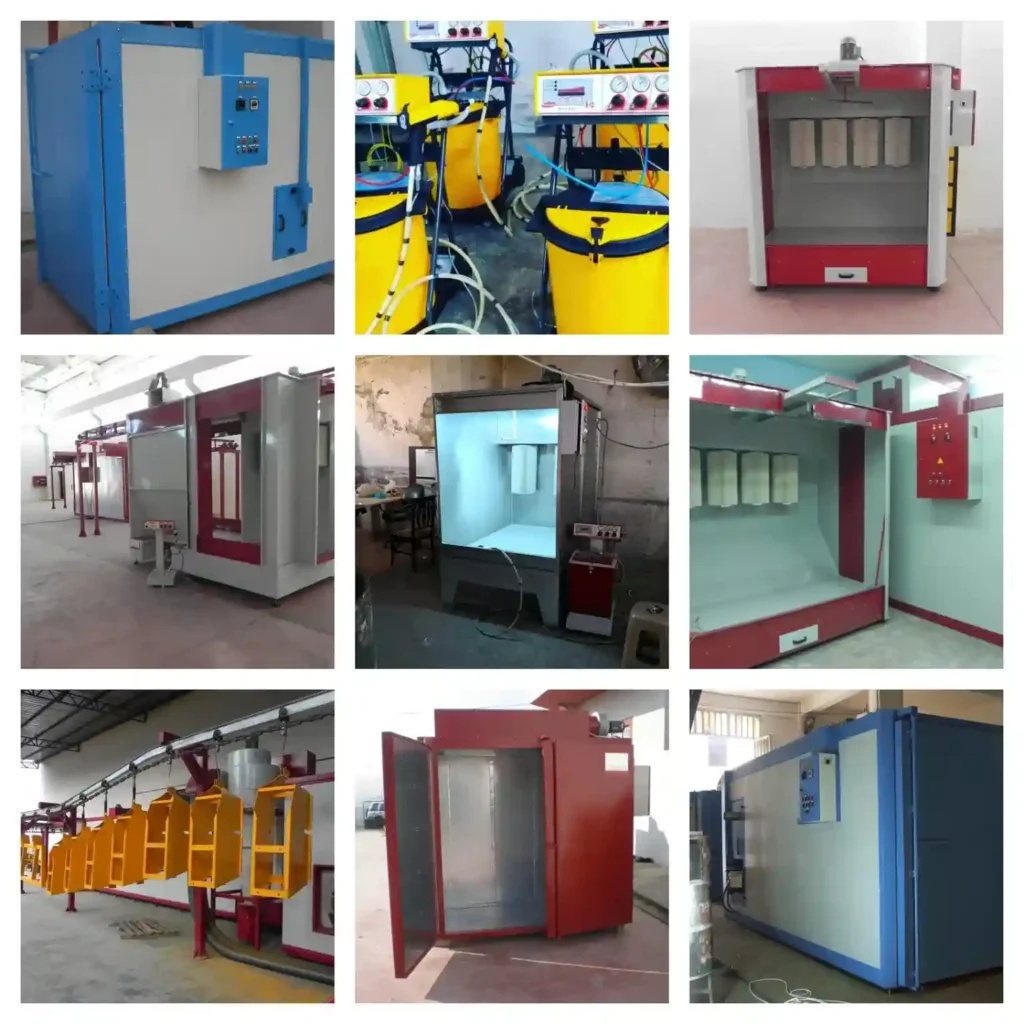
Powder coating equipment is used to apply a thin layer of powder over a metal surface. This type of coating is applied by an electrostatic process and is a very popular method for finishing metal parts.
This type of equipment can be divided into two main categories: automatic and manual. Automatic booths are more popular because they provide better production rates, but they are also more expensive.
A powder booth is an enclosure in which the powder-coating process takes place. Powder-coating equipment includes an oven where the parts are heated to activate the powder, a gun that sprays or brushes on the powder, a conveyor belt that moves parts through the oven, and cartridge-type guns for applying thicker coatings with less overspray.
Powder coating is a technique that is used to provide a finish to metal parts. This technique has been in use for many years and it is still one of the most popular techniques today.
Powder coating equipment consists of booths, ovens, guns, machines, lines and conveyors. A booth can be either automatic or manual. An automatic booth is more expensive than a manual booth but it is also faster and more efficient.
Thermoset powder: Thermoset powders are the most common type of powder coating. They undergo an irreversible chemical reaction during the curing process, forming a hard, crosslinked network that is highly resistant to heat, chemicals, and scratches.
Thermoplastic powder: Thermoplastic powders do not undergo a chemical reaction during the curing process. Instead, they simply melt and fuse together when heated. This makes them less durable than thermoset powders, but they are also more re-flowable, which can be useful for certain applications.
Epoxy powder: Epoxy powders are known for their excellent corrosion resistance and chemical resistance. They are also very hard and durable. However, they can be brittle and are not as UV resistant as some other types of powder coating.
Polyester powder: Polyester powders are the most versatile type of powder coating. They offer a good balance of properties, including durability, corrosion resistance, UV resistance, and chemical resistance. They are also available in a wide range of colors and finishes.
Polyurethane powder: Polyurethane powders are known for their flexibility and toughness. They are also very resistant to abrasion and impact. However, they are not as heat resistant as some other types of powder coating.
Acrylic powder: Acrylic powders are known for their excellent UV resistance and weather resistance. They are also very glossy and have a high scratch resistance. However, they are not as chemically resistant as some other types of powder coating.
Nylon powder: Nylon powders are known for their excellent chemical resistance and abrasion resistance. They are also very flexible and impact resistant. However, they are not as heat resistant as some other types of powder coating.
Fluorocarbon powder: Fluorocarbon powders are known for their excellent chemical resistance, UV resistance, and non-stick properties. They are also very durable and easy to clean. However, they are relatively expensive.
Silica powder: Silica powders are used as fillers and extenders in powder coatings. They can help to improve the adhesion, flow, and leveling of the coating.
Metal flake powder: Metal flake powders are used to create decorative finishes. They can be used to add sparkle, shine, or a metallic look to a powder coating.
Not only do we manufacture our powder coating equipment, we also ship them worldwide to your facility with care
We’re not just the manufacturers of your powder coating equipment, we’re also your worldwide delivery partners.
At EMS Powder Coating Equipment, we understand that getting your powder coating equipment to you quickly and safely is just as important as manufacturing it to the highest standards. That’s why we offer worldwide delivery services to all of our customers.
We work with a network of experienced and reliable shipping partners to ensure that your equipment arrives on time and in perfect condition. We also offer a variety of shipping options to fit your budget and needs.
Whether you need your equipment shipped to a local address or to an international destination, we can help. We’ll work with you to choose the best shipping option for your needs and to keep you updated on the status of your shipment every step of the way.
So when you choose EMS for your powder coating equipment, you’re not just getting the best products on the market, you’re also getting the best possible delivery experience.
Contact us today to learn more about our worldwide delivery services.


